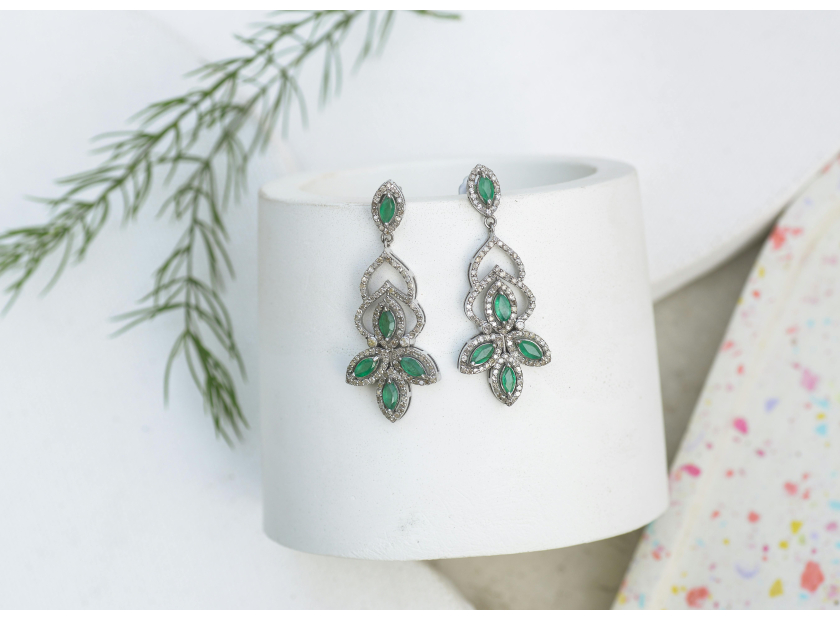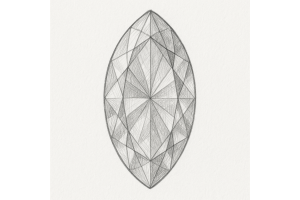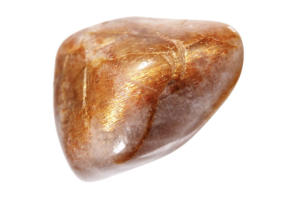GBP
/
GBP
/
Shipping to:
Currency:
Emeralds vs Rubies: Key Differences, Value & How to Choose
Emeralds and rubies have captivated hearts for centuries, each boasting a rich history and unique allure.
Whether you're a gemstone enthusiast or considering a precious purchase, understanding the distinctions between these two gems can guide your decision.
Let's delve into the world of emeralds and rubies to uncover their secrets.
What Are Emeralds? A Quick Guide
Origins and History of Emeralds
Emeralds, with their mesmerising green hue, have been cherished since antiquity.
The ancient Egyptians mined them as early as 1500 BCE, associating them with fertility and rebirth.
Today, Colombia stands as the premier source, producing emeralds renowned for their vibrant colour and clarity.
Physical and Chemical Properties of Emeralds
Belonging to the beryl mineral family, emeralds owe their verdant shade to trace amounts of chromium and vanadium.
They rank between 7.5 and 8 on the Mohs hardness scale, indicating good scratch resistance.
However, their natural inclusions, often termed "jardin," can make them susceptible to fractures.
Symbolism and Meaning of Emeralds
Emeralds have long symbolised renewal and growth, mirroring the vitality of nature.
In various cultures, they're believed to bring foresight, good fortune, and youthfulness to their bearers.
What Are Rubies? A Quick Guide
Origins and History of Rubies
Rubies, celebrated for their deep red tones, have been treasured throughout history.
The Mogok Valley in Myanmar is famed for producing some of the world's most exquisite rubies, often referred to as "pigeon blood" due to their intense colour.
Other notable sources include Thailand, Cambodia, and Mozambique.
Physical and Chemical Properties of Rubies
Rubies are a variety of the corundum mineral, with their red colour stemming from chromium.
They boast a hardness of 9 on the Mohs scale, making them second only to diamonds in durability.
This resilience makes rubies suitable for everyday wear.
Symbolism and Meaning of Rubies
Often associated with passion and protection, rubies are believed to bring vitality and courage.
Their fiery hue embodies love and strength, making them a popular choice for romantic jewellery.
Emeralds vs Rubies: Key Differences
Appearance and Colour Comparison
While both gems are striking, their colours set them apart.
Emeralds display a range from light to deep green, sometimes with bluish undertones.
Rubies, on the other hand, span from pinkish-red to a rich, dark red.
The most prized rubies exhibit a pure, vibrant red without secondary hues.
Durability and Hardness
Rubies surpass emeralds in hardness, ranking at 9 compared to emeralds' 7.5-8.
This means rubies are more resistant to scratches and chips.
Emeralds, due to their inclusions, require more cautious handling to prevent damage.
Value and Rarity
Both gemstones are valuable, but their worth depends on quality factors like colour, clarity, and origin.
High-quality rubies, especially those from Myanmar with the coveted "pigeon blood" hue, can command higher prices than emeralds.
However, exceptional emeralds, particularly those from Colombia, are also highly sought after and can be equally valuable.
If you're looking to explore beautiful gemstone options, check out gemstone engagement rings available in a range of designs.
Treatment and Enhancement Techniques
It's common for emeralds to undergo oil treatments to fill surface-reaching fractures, enhancing clarity.
Rubies often receive heat treatments to improve colour and transparency.
When purchasing, always inquire about any treatments, as they can affect the gem's value and care requirements.
You can learn more about gemstone treatments in our guide on how gemstones and diamonds are formed.
Emerald vs Ruby: Which Should You Choose?
Considerations Based on Personal Style
Your choice between an emerald and a ruby should reflect your personal aesthetic.
If you're drawn to cool, calming tones, an emerald might resonate with you.
Conversely, if vibrant, warm hues appeal to you, a ruby could be the perfect fit.
Purpose of Purchase
Consider the occasion and purpose.
Rubies, with their durability, are ideal for rings and bracelets subject to daily wear.
Emeralds, while stunning, might be better suited for earrings or necklaces, where they're less prone to knocks.
For those exploring unique ring options, check out non-traditional engagement rings that feature rubies, emeralds, and more.
Budget and Long-Term Value
While both gems can be investment pieces, high-quality rubies often fetch higher prices due to their rarity.
However, top-tier emeralds also hold significant value.
Determine your budget and seek the best quality within that range.
If you're undecided between natural and man-made stones, read our guide on lab-grown diamonds vs gemstones to help you choose wisely.
How to Spot Authentic Emeralds and Rubies
Signs of Quality and Authenticity
Authentic gemstones have specific characteristics.
Natural emeralds typically contain inclusions; a completely flawless emerald might indicate a synthetic origin.
Rubies should exhibit vivid, saturated colour and, under magnification, may show natural growth lines or inclusions.
Questions to Ask Your Jeweller
When purchasing, ask about the gem's origin, any treatments it has undergone, and request certification from reputable gemological laboratories.
This ensures you're making an informed decision.
If you're looking to pair your gemstone with other fine jewellery, check out our collection of diamond wedding rings for timeless elegance.
Caring for Your Emeralds and Rubies
Maintenance and Cleaning Tips
For both gems, gentle cleaning is key.
Use lukewarm water, mild soap, and a soft brush.
Avoid ultrasonic cleaners, especially for emeralds, as vibrations can exacerbate existing fractures.
Storage and Protection
Store each gemstone separately in soft pouches to prevent scratches.
Keep them away from extreme temperatures and harsh chemicals to maintain their brilliance.
Frequently Asked Questions
Are rubies or emeralds more expensive?
High-quality rubies, particularly those with the "pigeon blood" hue from Myanmar, often command higher prices than emeralds.
However, exceptional emeralds, especially from Colombia, can also be highly valuable.
Which gemstone is better for engagement rings?
Due to their superior hardness, rubies are more suited for engagement rings intended for daily wear.
Emeralds, while beautiful, require more care and might be better for occasional wear pieces.
How can I tell if an emerald or ruby is real?
Authentic gems often have natural inclusions.
Request a certification from a recognised gemological laboratory to verify authenticity and treatment history.
What is the rarest type of ruby or emerald?
The rarest rubies are those with the "pigeon blood" red colour, primarily sourced from Myanmar.
For emeralds, the most sought-after stones come from Colombia and exhibit a pure, vivid green with minimal inclusions.








